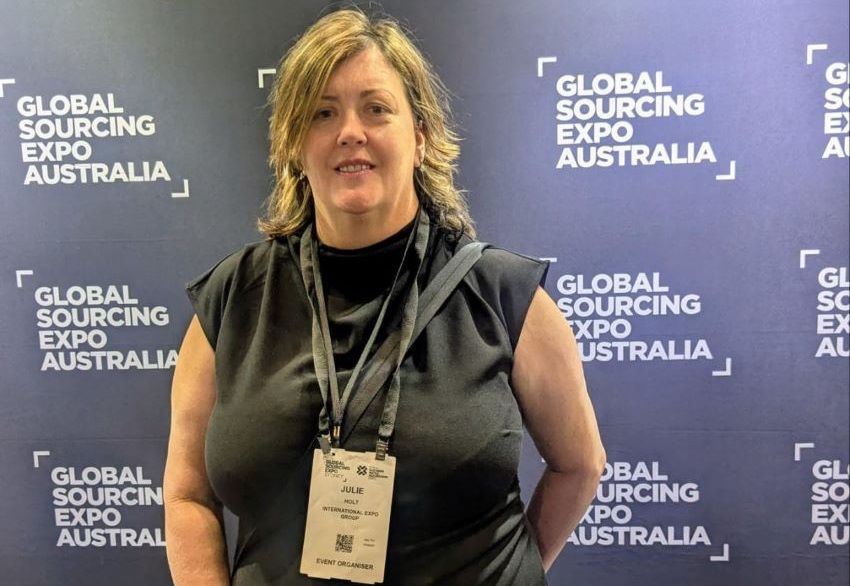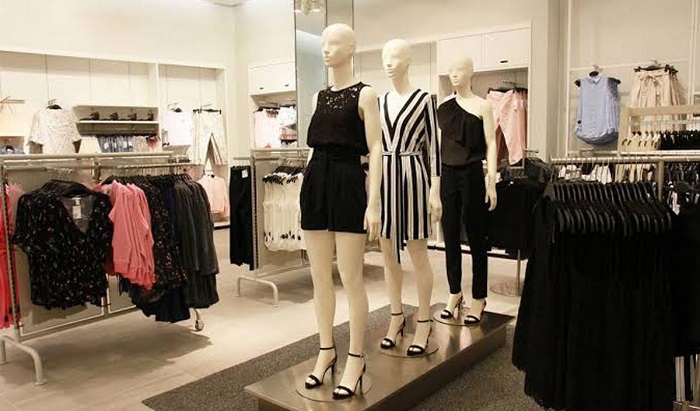
UK sportswear growth pegged at 8.7 per cent
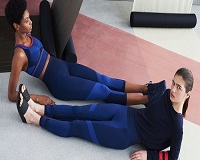
"UK Sportswear Market 2017-2022 report predicts 8.7 per cent growth this year, on top of estimated UK sportswear sales of £2.5bn in 2017. And the sector is changing swiftly to cater to ever-evolving consumer demands as the market matures. Global Data’s report reveals as a sector focussed on lifestyle, the latest developments in the market chime with growing wellness trend and the increasingly mindful consumer decisions of younger shoppers. As with fashion in general, activewear shoppers and brands are turning their attention to sustainable design in a new way." UK Sportswear Market 2017-2022 report predicts 8.7 per cent growth this year, on top of est... Read more
Life cycle assessment (LCA) to guide companies towards sustainability
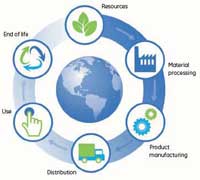
"While sustainability rankings have gained prominence however, one doesn’t really know the authenticity of these reports and on what basis assessment are done. Sustainability assessment is complex, especially where the value chain is long and products are diverse. Rules to ensure a ‘level playing field’ are set out in guidelines for Life Cycle Assessment (LCA) by the International Organization of Standardization (ISO). ISO 14040:2006 and 14044:2006 provide broad guidance for quantifying environmental impacts of a product from cradle-to-grave. Importantly, in 2017 ISO provided clearer guidance on using an LCA approach for comparative" While susta... Read more
Raw material price hike a cause of worry for apparel industry
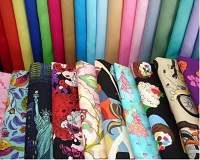
"Besides other prevailing challenges, apparel companies need to now tackle steep increase in prices of raw materials as well. As per recent stats, wool prices have soared to record highs this year on booming demand, while a drought in Texas and rising Chinese imports have sent cotton futures to a nearly six-year peak in the US. The price of oil, used to make synthetic fabrics like polyester and rayon, is up over 50 per cent from a year ago." Besides other prevailing challenges, apparel companies need to now tackle steep increase in prices of raw materials as well. As per recent stats, wool prices have soared to record highs this year on booming demand, while a dr... Read more
Technology remains the bedrock of Japan’s textile industry
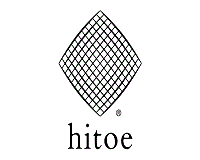
"Dubbed as one of the most technologically advanced nations, Japan has been bringing interesting concepts in the world of textiles. Technical textiles that integrate cyber-technologies, such as Toray’s bio-electrode conductive nanofibre ‘hitoe’, a bio-electrode conductive fibre that monitors a user’s biometric signals through IoT, are an important element of such innovation for Japan’s cutting-edge textile sector. Takao Tobari, Executive Director, Japan Apparel-Fashion Industry Council points out that the efficiency in production of Japan’s technical textiles, in particular for sportswear and luxury textile brands, can be improved throu... Read more
Global Lyocell fiber market to touch $1.5bn by 2024
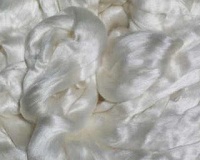
"As per a new research report by the market research and strategy consulting firm, Global Market Insights, Lyocell fiber market will reach over $1.5 billion by 2024. Fashion trends have changed rapidly over the past few years and will continue to do so in the coming years, which will drive industry growth. Modern technology and fibers have been developed which have escalated the use of better quality materials and has driven lyocell fiber marker demand. Brands have started focusing on fibers that can be recycled and reused after the end of a product’s lifecycle." As per a new research report by the market research and strategy consulting firm, Global Market... Read more
China’s development plan for textile industry to promote green manufacturing
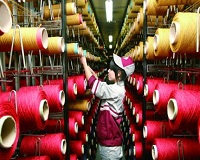
"The textile industry is tightly linked to various development issues, including employment, labour and promotion of clean/green technology. For textile manufacturers, promoting green value chains means that sustainability and green awareness should be encapsulated in the entire production process. This means an assessment of the environmental impact at the beginning of the design stage, and focus on the application of environmental protection technology and cleaner production processes. Manufacturers must adopt sustainable standards for cleaner production to effectively control the use of harmful chemicals." The textile industry is ... Read more
Brexit: British fashion industry braces up for tough times ahead

"Only seven months remain for the UK to formally exit the European Union, and the £28 billion fashion sector has to get three different looks ready for future-proof business. As per Richard Lim, Chief Executive of Retail Economics, the potential scenarios would include ‘Hard Brexit’, where designers, retailers and manufacturers have to pay to trade with the EU. This would mean clothing and footwear tariffs of about 11 per cent or just over £1 billion more each year. A second option includes free trade agreement and a third option believes the UK would remain a part of the customs union. Lim believes, whatever happens, the price of a pair of jeans w... Read more
Style at a Cost: Deforestation, environment damage a price we pay for fashion

"Garments, traditionally made from animal furs, are increasingly being replaced by synthetic materials, causing large scale deforestation. For instance, a wool sweater, earlier made from animal hair, is now being made from cotton or nylon yarn. Coats are being stuffed with goose down or synthetic insulation depending on the quality of the product. Garments are often made from cotton and the consumer usually is not aware of the specific growing conditions or agricultural practices that lead to their garments. Extremely popular in the 1860s, the silk industry was plagued by a disease that struck silkworms. It was then that the famed scientist Louis Pasteur and Count Hilaire... Read more
ITC’s conference explores integration of fashion and AI

"The Institute of Textiles and Clothing (ITC) of The Hong Kong Polytechnic University (PolyU) in partnership with the Vision and Beauty Team at Alibaba and The Textile Institute, UK is organising the first-of-its-kind academic conference titled ‘Artificial Intelligence on Fashion and Textile Conference 2018’ from July 4 to 8, 2018. The four-day conference is exploring the integration of fashion and textile supply chain and artificial intelligence (AI). Over 250 researchers, engineers, practitioners and IT professionals from the AI and fashion fields are participating." The Institute of Textiles and Clothing (ITC) of The Hong Kong Polytechnic Universit... Read more
A resurging apparel industry augurs well for UK
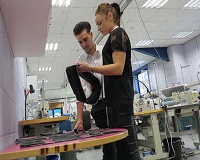
"Though it’s difficult for the millennial to imagine the UK as a mass producer of clothing and textiles, the nation in 1970s had a thriving textile manufacturing industry. The industry started to drift slowly by early 1980s when retailers and brands relocated to emerging markets in a bid to cut costs and increase margins. The bulk of this manufacturing drifted to China, which effectively began churning out goods for markets across the globe. In the early 2000s, the UK clothing and textiles sector reached its low¬est number of employees, totaling only about 90,000 workers. As expected, with a big fall in demand, factories across the UK closed down, although some ... Read more
Made in US gaining strength in domestic start-up sector
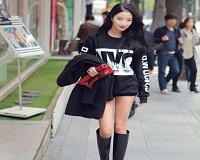
"A recent report suggests ‘Made in US’ clothing is gaining ground with the government’s thrust and companies’ near-shoring strategies. The focus is on high-quality US craftsmanship priced competitively with imports. This proposition makes perfect sense for manufacturers and sellers as the entire supply chain is in their hands rather than depending on the external factors. These increasingly growing state of affairs is giving rise to ‘grown and sewn in the US’ phenomenon, where e-commerce lets small firms tell a story and sell directly to consumers who have an interest in natural fibres such as cotton and wool, a willingness to invest in... Read more
IPE Green Supply Chain Map enhances textile value chain visibility
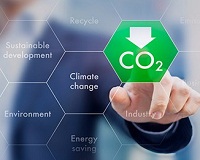
"IPE Green Supply Chain Map links major fashion brands such as Target, Esprit, New Balance, PUMA, Gap Inc, and Inditex with their suppliers’ environmental performance. Kurt Kipka, Senior Project Manager – Responsible Sourcing Initiative, NRDC, says each brand conducts a mapping process against a database of Chinese facilities that have publicly available real-time monitoring. In most cases, the brands have already made these lists available to the general public. In that case, the map simply takes existing information and improves upon its usability." IPE Green Supply Chain Map links major fashion brands such as Target, E... Read more
Tough competition make China a tough market for global brands

"While China presents a huge opportunity for global brands with its huge consumer base, yet there have been instances where Western brands have failed to lure Chinese consumers. The recent case is that of Marks & Spencer which has exited online retail in the country. The company recently announced it would end online sales in China through Tmall store. Shaun Rein, MD, China Market Research feels one of M&S’ problems is they tried to sell to a middle-class consumer by creating a middle-class brand positioning. Most brands which take this approach in China, fail. That’s where Marks & Spencer failed. Also, sizes for Asian body types were not considere... Read more
Next-Gen textiles fastrack development in fiber and fabrics

"One of most striking examples is the development and widespread commercial usage of Unifi Inc.’s Repreve polyester fiber made from recycled post-consumer plastic water bottles. Two years ago, Unifi opened a bottle processing facility in Reidsville, N.C., to convert plastic bottles into polyester fiber and yarn, a year later it expanded its Repreve Recycling Center in Yadkinville, N.C. That gave the company an annual capacity to produce up to 60 million pounds of Repreve and other premier value-added products." Introduction of new environment-friendly materials ranging from recycled polyester, upcycled and regenerated fabrics, recycled cotton and cellulosic... Read more
Denim continues to flourish globally backed by innovation and styles

"Amid athleisure’s growing preference, the world’s most famous attire – denim is witnessing lacklustre growth since the last two years. But what can bring zing back is the products newness. In a report, ‘Spotlight on Jeans: Denim Bounces Back’, Lorna Hennelly, fashion & beauty analyst, Euromonitor, says consumer demand for leggings is slowing, giving rise to a rebound in rigid, retro-style denim. The resurgence in demand is driven by millennials and grows in line with the industry-wide revival of ’90s-style fashion and nostalgic Americana, after over a decade of ultra-stretch skinny jeans saturating the market. In an effort to compe... Read more
China’s share in EU textile imports on the decline: Euratex report
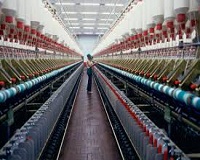
"China’s leading position is continuously being threatened with the arrival of low coast production regions like Bangladesh and Vietnam. A Euratex report states even though emerging countries are gradually gaining market share, it should be noted that some of the businesses are actually Chinese companies that have relocated. Mediterranean countries, which have long benefited from their proximity to the EU-28, have held the same position for the last few years. Contrary to China, SAARC and ASEAN zones have grown slowly but surely since 2010, improving gradually their share in EU textile & clothing imports. In 2017, these four zones still accounted for over 86 per... Read more
Growing demand sees new innovations in black denim

"Over the past few seasons, there has been growing interest in black denim, from the trucker jackets to dresses and regular five-pocket jeans. The consumer today desires a garment that stays black even after multiple washes, providing that benefit of a lasting product. SuperCharged Noir collection strives to provide exactly this, ensuring that the supply chain passes this innovation to the retailers, the brands, and ultimately to the consumer." Over the past few seasons, there has been growing interest in black denim, from the trucker jackets to dresses and regular five-pocket jeans. The consumer today desires a garment that stays black even after multiple washes... Read more
Bangladesh upstages Mexico as the US’ new denim partner
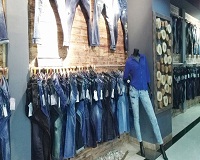
"Apparel business from the US is gradually skewing towards Bangladesh. Recent OTEXA figures reveal, Bangladesh exported denims worth $507.90 million to the US in 2017, a 9.57 per cent surge over previous year. Mexico’s exports, on the other hand dipped 7.92 per cent to reach $793.46 million. During the first six months of the year from January to June ’18, Bangladesh exported denim worth $245 million, a 16.86 per cent growth, while Mexico, the second biggest denim apparel supplier to the US, reported a 2.73 per cent decline to reach $360 million. Rising wages in Mexico as well as trade negotiations on NAFTA is affecting Mexico’s growth. Bangladesh, ... Read more
Global textile companies eye India for their sourcing needs

"Amid clouds of uncertainty, companies across the globe are facing challenges while operating businesses out of their own countries. Given this scenario, India is emerging a preferred destination for sourcing. Alessandro Lenzi, Administrator, Lebiz srl, recently came to India to explore factories for intimate apparels. He pointed out despite the economic crisis in Italy, his company is optimistic about further growth. This is the best time to explore new growth opportunities and to come back strongly post crisis, as early as possible." Amid clouds of uncertainty, companies across the globe are facing challenges while operating businesses out... Read more
Wool activewear a new global fashion fad

"Leading athleisure companies are experimenting with growing acceptance of wool activewear and the properties associated with it. Be it wool’s softness and odour-resisting properties, brands like Adidas and Lululemon are making sure the trend catches on. Added to this, wool’s inherent properties such as breathability and moisture-wicking capabilities are slated to drive the growth of the material. This trend was highlighted at the recent ISPO trade fair in Munich. Norwegian brand Devold won an ISPO Award 2018 for its Tuvegga Sport Air base layer. The reversible two-sided functional base layer is designed for high-performance activities and is made from 100 per... Read more
Burberry reinventing wheels of success, focuses on sustainability

"Counterfeiting is a huge risk to fashion companies and is reportedly worth $450 billion. According to the UK’s Anti-Counterfeiting Group, counterfeiting and theft of intellectual property fuels drugs smuggling and cases of human trafficking. The Burberry statement says the company has careful processes in place to minimise the amount of excess stock produced. On the occasions when disposal of products is necessary, they do so in a responsible manner and continue to seek ways to reduce and revalue waste." Luxury fashion brand Burberry is on a fast track to transform its business model, which redefines waste and embeds the circular economy into an industry pierced... Read more
Cotton tees more popular than manmade fibres: Study
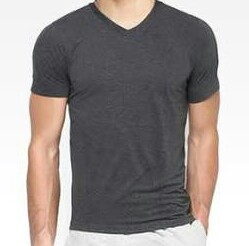
Companies have long been experimenting with newer versions of T-shirts to lure consumers. Of late, graphic, logo and tie-dyed tees are in trend especially among kids, hippies, jocks and gamers. The entire fashion diaspora seems to have catapulted with the popularity of athleisure and has attracted the attention of luxury designers and celebrities. Anthony Moni, men’s stylist, Rag & Bone’s SoHo, New York, says graphic tees are important right now, especially among the youth. Most of the T-shirts at Rag & Bone are made of 100 per cent cotton. They also retail at a higher end price point, too: base tees retail ... Read more
Bangladesh needs to introspect before factory automation
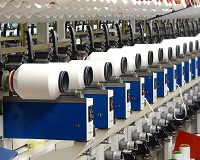
"Bangladesh has been setting examples with factory automation in textile and factories. The classic case is of Mohammadi Fashion Sweaters factory in Dhaka where a few dozen workers supervise 173 German-made machines which knit black sweaters for overseas buyers. Surely, this is a huge transformation compared to a few years ago, when hundreds of employees could be found standing over manual knitting stations for up to 10 hours a day. Mohammadi’s owners began phasing out such work in 2012, and by last year, the knitting process was fully automated." Bangladesh has been setting examples with factory automation in textile and facto... Read more
Sustainable materials, certifications driving apparel industry
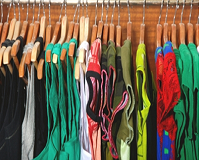
"More and more companies are acquiring industry materials and manufacturing certifications as a part of their sustainability goals and brand building. The latest include the Oeko-Tex’s Eco Passport certification, recognised as a Level 3 ZDHC MRSL Conformance Indicator for the ZDHC Roadmap to Zero Program. This shift indicates that Eco Passport certified chemical substances meet the ZDHC’s (Zero Discharge of Hazardous Chemicals) guidelines for safer textile chemistries that are also verified as being responsibly manufactured. ZDHC MRSL Conformance Level 3 covers chemical substances that are limited or banned from use in apparel and footwear materials production... Read more
Demand mapping gets easy with artificial intelligence
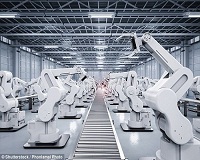
"Slowly but surely, Artificial intelligence (AI) is seeping deep into the textile industry production cycles. Till date, several attempts have been made to quantify something as abstract as fashion but all were in vain. Thanks to the fast changing technology landscape, things are finally able to quantify the complexities of abstracts, such as fashion. And as Ambud Sharma, Founder, Escaro Royale Luxury points out, AI is now helping with not only merchandising decisions but also in fine-tuning the supply chain and creating customised and personalised fashion trends." Slowly but surely, Artificial intelligence (AI) is seeping deep into the text... Read more
H&M reworking on labour policy to ensure sustainable goals
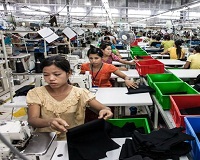
"While leading companies have taken efforts to curb issues of worker underpayment, yet the goal seems too far-fetched. As the world’s second-largest apparel company — after Inditex, which owns Zara — H&M said it felt a sense of “shared responsibility” when it came to persistently low wages, an issue as endemic to the global garment industry as unrelenting hours, unsafe environments, and rampant verbal, physical, and sexual abuse. In a statement, it said that it has always been our vision that all textile workers should be able to live on their wage." While leading companies have taken efforts t... Read more
Asean and its growing importance for member countries
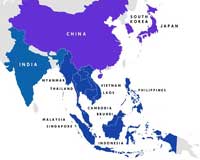
"Asean took shape on August 8, 1967, the Association of Southeast Asian Nations, ASEAN, was comprised Indonesia, Philippines, Malaysia, Singapore, and Thailand and today it has expanded to Cambodia, Lao PDR, Brunei Darussalam, Myanmar, and Vietnam. The intent of the association formed between ten Southeast Asian countries was to promote inter-country trade, governmental cooperation, and economic, political and socio-cultural integration of the member countries, and globally. Additionally, it also aims to protect the member states’ regional stability and instill peace amongst them in times of conflict resolution. In 2015, ASEAN organization’s nominal GDP (combi... Read more
Streetwear’s popularity spells lucrative business for brands

"Streetwear has been constantly evolving and shaping the fashion industry in unexpected ways. Offering something for everyone; from high to low, casual to chic, streetwear is an important segment of fashion business today. For example, the market for US urban streetwear in 2015 was valued at about $80 billion by Statista. And a study by Bain & Company last October revealed, high-end streetwear helped boost global sales of luxury brands by 5 per cent. A takeaway from the sportswear segment, streetwear is the favourite buzzword in fashion today. From heritage houses to fast-fashion brands, retailers and big-budget investors, everyone wants has a stake in steetwear. Almo... Read more
India needs labor reforms
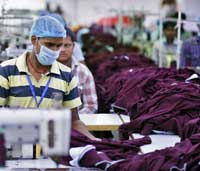
There has been a contraction in the Indian workforce between 2013-14 and 2015-16.About 1.2 million jobs were lost and total employment was down from 483.9 million to 482.7 million. This ties in with the poor growth in sectors such as exports during this period. Countries with more practical labor laws such as Bangladesh have been growing their share in the global textile market at India’s cost. India is fast losing its competitive edge in exports and enterprises at home are increasingly automating operations. But critical labor reforms are pending. Companies, even smaller establishments, need to be able to hire and fire, or they will simply stop relying on perman... Read more
Making denim sustainably, technology shows the way
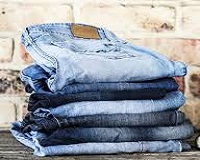
"An average consumer buys four pairs of jeans a year in the US; in China’s Xintang province, a hub for denim, 300 million pairs are made annually. These figures could illustrate the harmful impact of denim manufacturing on the environment. And showcasing these effects, award-winning filmmakers David McIlvride and Roger Williams, have created a new documentary film, ‘The RiverBlue: Can Fashion Save the Planet?’ It is estimated that 70 per cent of Asia’s rivers and lakes are contaminated by the 2.5 billion gallons of wastewater produced by that continent’s textile industry." An average consumer buys four p... Read more
US cotton most preferred by mills, manufacturers across the world: Study
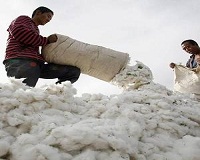
"Exporting three times more cotton than its closest competitor, the United States achieved a 40 per cent share of cotton fiber exports in its latest marketing year. A study conducted on mills and manufacturers from across the world aimed to understand how the US industry maintains high share of exports found the quality of US cotton to be superior then cotton from other regions. An assessment of US cotton industry and Cotton Council International’s role in the industry was conducted by a third party research firm in 2017. The firm surveyed 228 mill and manufacturers to gain insight into their purchase decisions as well as perceptions toward US cotton and the Co... Read more
Immigrant women workers face tough in garment factories
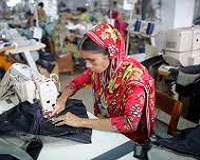
"Migrant women workers have a tough time working in garment factories, reveals a recent ICN (The India Committee of the Netherlands) and Clean Clothes Campaign report, ‘Labour without liberty – female migrant workers in Bangalore’s garment industry’. It found five out of the 11, ILO indicators for forced labour exist in the Bengaluru garment industry: abuse of vulnerability, deception as a result of false promises (wages etc.), restriction of movement in the hostel, intimidation and threats, and abusive working and living conditions." Migrant women workers have a tough time working in garment factories, reveal... Read more
Middle East emerging as a fashion hotbed

"Thomson Reuters ‘State of the Global Islamic Economy Report’, recently reported that Muslim consumers’ spending on apparels was the highest in 2015 around $243 billion and is projected to touch $368 billion by 2021. As per Pew Research Center, Muslims are the fastest growing religious group in the world, estimated to increase the population of Islamic Faith by 70 per cent in the next 40 years. In order to tap this opportunity, brands are increasingly finding means & ways to lure this tribe." Thomson Reuters ‘State of the Global Islamic Economy Report’, recently reported that Muslim consumers’ spending... Read more
USTR lists out trade concerns with countries
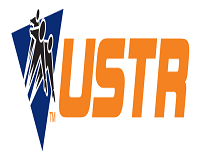
"The office of the US Trade Representative (USTR) released the 2018 National Trade Estimate (NTE) annual report, which highlights the foreign trade barriers American exports face. Robert Lighthizer, US Trade Rep., said the President is fully committed to addressing unfair foreign trade barriers through tough enforcement and the negotiation of new agreements that increase US exports and support high-paying jobs for all Americans. The government intends to use every available tool to ensure Americans are treated fairly. As per the annual report, there is a huge probability of amendments in existing trade agreements." The office of the US Trade... Read more
Indian garment manufacturers need to speed up to grab global business
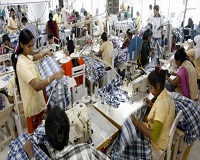
"As India aims for 20 per cent yearly growth in exports over the next decade, Indian manufacturers need to develop a business strategy that can help the country to succeed in the US and European markets. In 2025, global trade in the textile and apparel market will cross $1.2 trillion. China has nearly 40 per cent share in global exports. However, in the past few years, the country is experiencing a downward trend in apparel exports and has vacated nearly $30 billion worth of space in global trade. Growth in global trade and China’s shrinking exports share present a lucrative opportunity for other countries with competitive manufacturing facilities. India can become ... Read more
Gauging India-China’s trade relationships amid US-China trade war
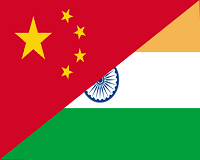
"On positive fallout of the ongoing turmoil between China and the US, is that Beijing has lowered duties on many Indian imports and removed them for 28 drugs, including anti-cancer drugs. As a favour, India has removed tariffs on over 3,000 goods from China and other Asian countries. Trade experts and Chinese officials say this progress, reflected in its Belt and Road Initiative (BRI) and its interest in upgrading India’s poor infrastructure would result in massive opportunities for India. The China-initiated Asian Infrastructure Investment Bank has in the past two years given India nearly 30 per cent of its funds, most of which were allocated for infrastructure dev... Read more
Better data visibility enhances productivity

"Lectra’s latest white paper ‘Integrate to Collaborate’ emphasizes multinational supply chains and omni-channel retail distribution networks are standard and seasonal, geographic and size variability generate both huge numbers of SKUs (stock keeping units) and incredibly complicated product development and distribution processes. The paper says, without integration, this complexity creates more blind spots when it comes to transparency, visibility, and the ability to respond to change, than it does in perhaps any other industry." Lectra’s latest white paper ‘Integrate to Collaborate’ emphasizes multinational... Read more
Visual technology to aid online shoppers

"While e-commerce has been growing its expanse in India, yet it is sometimes quite challenging to live upto consumers’ expectations based on search keywords. To circumvent this problem, many e-commerce giants are slowly incorporating visual search to aid customers. Buyers have to submit the photo of the item they are searching, and the get almost precise results. While the technology is still under development, many customers who have used the feature are quite satisfied with it. For instance, Asos launched the visual search feature on their website. The visible search feature assists the customer in buying the exact thing without any issues." While e-comme... Read more
Bangladesh revamping trade policies to boost exports
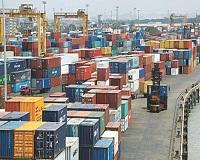
"Bangladesh’s merchandise exports in the last couple of years have declined to a single digit. The country’s average export growth between FY15 and FY18 was only 5.03 per cent. Moreover, export earnings in the last three years have fallen behind annual projection of the Seventh Five-Year Plan (7FYP). In the past fiscal year, value of merchandise export stood at $36.66 billion as against the projected $42.0 billion. The government has targeted export earnings of $39.0 billion for the current fiscal year (FY19). This is much lower than the projected figure of $47.46 billion. The government has also set an annual target of service export at $5.0 billion in the cu... Read more
China-US trade councils working to improve trade situation
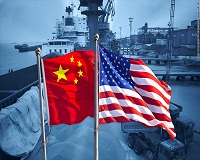
"Rising trade aberrations are proving to be detrimental for Chinese and American textile and apparel organisations. Expressing resentment, Xu Yingxin, VP, China National Textile and Apparel Council, stated tariff increases are not just a tax on consumers, they will also bring uncertainty to the stable global supply chain for top brands. Neither American consumers or fashion brands, nor Chinese textile and apparel manufacturers will benefit from the conflict, he added. He was speaking on the sidelines of 2018 China Textile and Apparel Trade Show New York with Messe Frankfurt North America. About 1,000 exhibitors from 17 countries attended the event, with more than 600... Read more
US-China Tariff Fallout: Cambodia emerges new investment destination
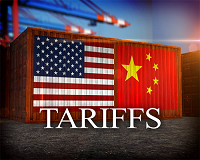
"A study by the US Fashion Industry Association indicates almost 67 per cent respondent’s expected value or volume of goods sourced from China to decrease over the next two years. A striking example of this is Steven Madden, which expects to source 15 per cent of its handbags from Cambodia this year, with this percentage doubling in 2019. Similarly, Tapestry, the luxury company behind Coach and Kate Spade handbags, is boosting Vietnamese production and sourcing only 5 per cent from China. Vera Bradley, meanwhile, is planning to shift its manufacturing operations to Cambodia and Vietnam from China." Increasing tariffs on Chinese products has led to the rise ... Read more
Inditex better placed than H&M to drive growth

"Fung Global Retail recently analysed fashion titans Inditex and H&M to understand the business strategies and USPs that set them apart. H&M produces just 20 per cent of its clothing range in-season, in contrast to 60 per cent at Inditex. Similarly, only 32 per cent factories that H&M uses are located in or close to Europe, compared to 59 per cent of Inditex’s factories. H&M’s revenue growth is being supported entirely by new store openings, and its sales-per-store growth is negative." Fung Global Retail recently analysed fashion titans Inditex and H&M to understand the business strategies and USPs tha... Read more
Bangladesh to become self reliant in textile & apparel
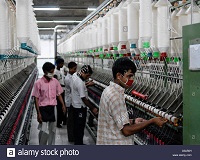
"Grabbing the third spot, Bangladesh is reigning its share in global exports of textile and apparel products. The country’s exports registered a growth of 9 per cent over the last five years to reach $34.4 billion in 2016, while imports have increased at a CAGR of 7 per cent in the same period to reach $10.3 billion in 2016. Bangladesh’s textile and apparel trade balance recorded a surplus of around $24.1 billion in 2016. When we talk about imports, cotton is the largest imported category by Bangladesh, representing 55 per cent of total textile and apparel imports (2016). This is followed by man-made textiles, others and apparel with a share of 35.0 per cent, ... Read more
Product innovation & time to market – key to retailers’ growth

"Retailers need to give an ever-increasing thrust on product development, differentiation and value addition, to break the cycle of low margins and costs, and the associated problems with it, finds a recent report by Kurt Salmon Associates, ‘From cost focus to true value creation’. Heavy discounts, markdowns plague the retail industry today, and the industry needs to focus on product, supply chain, quality, instead of always looking for the lowest cost producer." Retailers need to give an ever-increasing thrust on product development, differentiation and value addition, to break the cycle of low margins and costs, and the... Read more
China to emerge a strong cotton importer once more
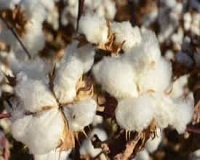
"Production growth in China has been lean due to limited farmland and high labour costs. China has agreed to significantly increase its purchases of the US goods and services, and cotton is one of the top agricultural exports of the US. Production of viscose staple fibre will increase further in 2018, pulling down prices, observes Zhu Beina, President, China Cotton Textile Association. The association anticipates cotton textile sector to be using 4 million ton of viscose fibre by 2019." Tim Bourgois, head of the cotton platform, Louis Dreyfus Company forecasts by 2019-20, China will become major cotton importer, importing 10 to 15 million bales (2 to 3 million to... Read more
India could be at risk of breaking global trade conduct
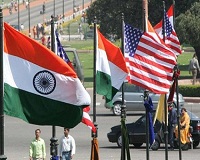
"The global trade law for the 164 WTO members prohibits discrimination on the basis of tariffs. India raised basic customs duties on 43 broad categories of goods, including electronics, in this year’s Budget. It also raised import tariffs on 76 textile products and announced higher safeguard duties on solar cells imported from China and Malaysia. The tariff increases that India implemented so far are within the bound rates, unlike US President Donald Trump’s global tariffs on steel and aluminium as well as the ongoing tariff measures being taken by Washington DC and Beijing against each other." By imposing retaliatory import duty, India can fall under... Read more
Pakistan working hard to boost its textile fortunes
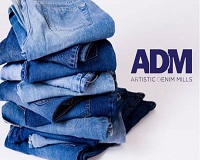
"Amidst all odds, Pakistan’s leading denim maker, Artistic Denim Mills, which operates as a one-stop shop turning cotton into jeans, plans to double its production and has already built a new factory in Pakistan’s financial hub. At a time when many textile companies have shut shop, this really comes as a surprise. Being bullish about the prospects, Faisal Ahmed, CEO, Artistic Denim, says he supplies to retailers such as Zara and Next Plc. Unlike most industrialists, Artistic Denim started by making garments about 25 years ago instead of just shipping spun yarn or fabric. Pakistan is among the top five growers globally. " Amidst all odds, P... Read more
EU facing a tough time mending trade ties with Pakistan
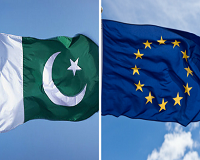
"In 2012, Europe adopted GSP+. The Plus (+) is a Delegated Regulation aimed at simplifying the entry mechanism to ensure transparency and predictability of the process. When a Standard GSP beneficiary requests GSP+ status, the country has to undertake a binding commitment to the ratification and effective implementation of 27 core conventions from the United Nations (UN) and the International Labour Organisation (ILO), in areas such as human rights, labour rights, good governance and environmental justice, highlighted Henri Malosse, former president, European Economic and Social Committee." In 2012, Europe adopted GSP+. The Plus (+) ... Read more
Technology and its slated expanse for apparel value chain

"Apparel value chain comprises of downstream functions (retailing) managed in advanced economies and upstream functions (manufacturing) managed by least developed economies. Given the small and medium enterprise status of apparel manufacturing and mostly entrepreneurial ventures, cheaper access to technology will be an incentive towards adoption by apparel manufacturing organisations, stresses Dr Prabir Jana, NIFT, Delhi. He says, for the first time, the developed and the developing worlds are creating, collaborating, communicating, and consuming on similar technology platforms, spurring global innovation. Of the 253 ‘unicorns’ tracked by CB Insights, 65 are f... Read more
Circular economy demands an all-inclusive growth
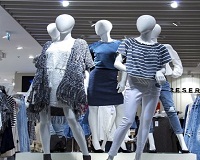
"While leading fast fashion and luxury apparel companies are taking initiatives to go green, the impact still seems to be insignificant. Aiming to reshape the industry with circular economy initiative, the Ellen MacArthur Foundation (EMF) has teamed up with some fashion brands to help overhaul the business model. It aims to reverse the hyper-consumption that is currently promoted in fashion—an industry on track to consume a quarter of the global carbon supply by 2050—and to recast the whole clothing supply chain into a system based on balanced consumption and less-intensive production methods." While leading fast fashion and luxury apparel... Read more
- 1
- 2
- 3
- 4
- 5
- 6
- 7
- 8
- 9
- 10
Trust over trends is how fashion e-commerce is being redefined in Europe
The digital racks of fashion e-commerce are changing as a new report by BoF Insights ‘The New Era of Fashion... Read more
Global Sourcing Expo Insights: India to reshape Australia's sourcing landscape
The recently concluded Global Sourcing Expo Australia (June 17-19) in Sydney served as a vibrant testament to a significant shift... Read more
Global Sourcing Expo: Australia's premier sourcing hub expands reach and vision
The Global Sourcing Expo, a pivotal event connecting global suppliers with Australian trade buyers, continues to solidify its position as... Read more
Is Shein's green push just for show? New report raises doubts
Global fast-fashion behemoth Shein released its extensive 2024 Sustainability and Social Impact Report in June, a document exceeding 100 pages.... Read more
Global Sourcing Expo highlights reshaping of global textile and apparel supply c…
The aisles of the Global Sourcing Expo Australia, which concluded its three-day run from June 17-19 in Sydney, buzzed with... Read more
Weaponizing E-Commerce: What the M&S cyberattack reveals about retail's new …
The recent cyberattack that brought down Marks & Spencer's (M&S) online operations for nearly seven weeks has highlighted a critical,... Read more
Nylon's New Frontier: Marrying strength with natural grace
For decades, nylon has been synonymous with exceptional strength, durability, and resilience. From mountaineering gear to industrial applications, its tough... Read more
The Textile Revolution: Polyester's quest for natural perfection
For decades, polyester has been the workhorse of the textile industry, valued for its durability, wrinkle resistance, and affordability. However,... Read more
Beyond the Booths: How Global Sourcing Expo is redefining the Asia-Pacific sourc…
With the successful completion of third edition of Global Sourcing Expo Sydney, Julie Holt, Global Business & Exhibition Director, Global... Read more
Retail slows as trade accelerates, the paradox of 2025 fashion: Wazir Advisors J…
The global apparel industry, often a reliable barometer of consumer confidence and trade health, is passing through a delicate recalibration.... Read more









